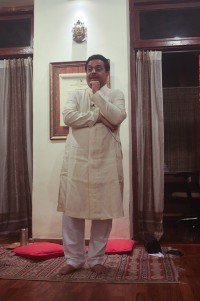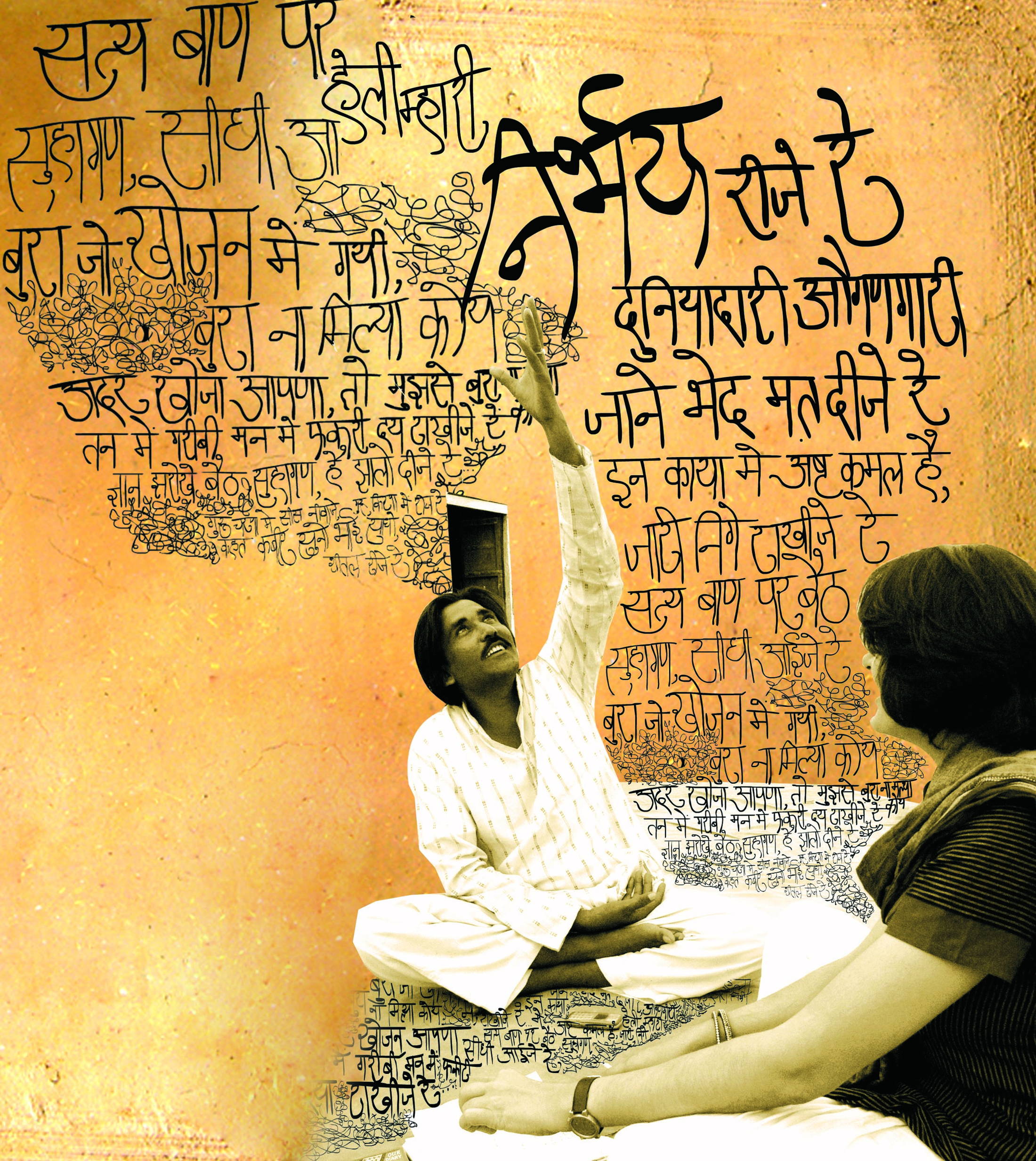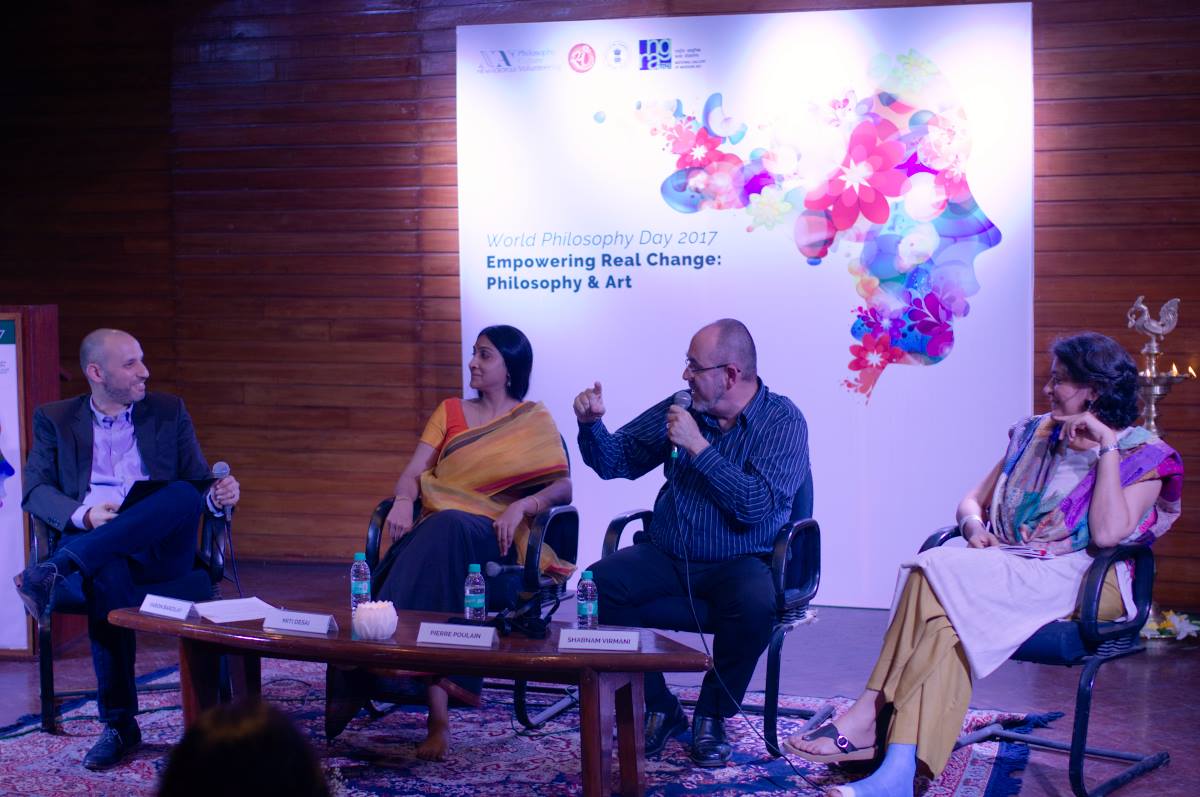Custodians of Culture: In Conversation with Padmashri Shekhar Sen
Article By Harianto Mehta
Padmashri Shekhar Sen, accomplished actor, singer, lyricist, and music director, is perhaps most celebrated for his unique mono-act theatrical renditions, through which he brings to life master poet-philosophers Tulisdas, Kabir, Surdas, and Vivekananda. Last February, New Acropolis (Mumbai) had the privilege to host an evening performance of a medley of Shekhar ji’s moving works. Ever since, I have been longing for an opportunity to unravel the man behind the masks. Seated on the cozy sofa of his Versova home, over a hot cup of masala tea, the opportunity presented itself. Delightedly looking back at his visit to the Centre he shares, “Any place I go that I sense is truly spiritual is very special for me. In a place like New Acropolis, where so much good is fostered, I just hoped to absorb some profound inspiration, like baby Krishna steals away butter!” Our conversation naturally arrived at unraveling the true role of an artist in society, and Shekhar ji playfully wove poetry and rhyme into his evocative explanations.
“An artist is first a seeker”, explains Shekhar ji. “We’ve been told that the sun rises in the east. But don’t just accept it. Go out. Look to the east. And see if the sun actually rises from there. Realize it from your own experience. This realization is essential. Without it, we can easily fall into the realm of belief…in our tradition, we’ve been taught to know, not to believe.” This is the reason, he claims, that Sanskrit has over 200 words to refer to the sun; every observer was encouraged to investigate and recognize its attributes for himself, each resulting in a different name. He continues, “Everything is a question. Start with ‘I’ and go to eternity. When you seek, never get satisfied by an answer. Keep asking. Because tomorrow you will find a new facet of the answer.” Melodiously he muses,
Yeh ishq nahi asaan itna samaj lijye
Ek aag ka darya hai aur doob ke jaana hai
Understand that love is not easy,
It is an ocean of fire, traversed only by drowning into it.
Equating Love with Investigation, he suggests the importance of drowning oneself in wonder and exploration, and insists that it is essential to engage with life. “Our relationships and daily activity is part of Life.” Through them, one arrives at answers; not by running away. He borrows from Vivekananda, saying that “the tapasya of the householder is the most difficult because he must tend to the welfare of his family…and his obligation to society, all the while moving towards his essential goal… But that is the fun! The ups and downs of life add flavor; sweet and sour, spicy and bitter. From each, answers must be sought. And only by engaging, will you find meaning.” He recites an example:
Jal mein kumbh hai, kumbh mein jal hai,
Bahar bhitar paani.
Water inside a pot, and water outside,
Water both inside and out.
Kabir demonstrates that our physical body is like a pot. And both on the inside and outside, analogous to water, is the divine. “Until this pot exists, we must celebrate both these expressions of the divine. Try to understand both inside and out.”
Investigation allows you to “understand the essence. One cannot arrive at conclusions without going through a proper process of investigation. Usually we don’t want to put in the effort of the process; we just want the fruits. But one cannot extract butter, without first procuring milk. This wisdom is butter. It has been handed down to us. But do we read it? Understand it? Instead we look for an expert who can summarize it for us within a half hour. We want everything as per our convenience. The thousands of hours of effort gone into compiling these gems, causes us boredom in a matter of minutes.”
He recollects a verse from the Upanishads:
Asato ma sadgamaya
Tamaso ma jyotirgamaya
Mrtyorma amrtam gamaya
Lead me from the asat to the sat,
Lead me from darkness to light,
Lead me from death to immortality.
This is not a Hindu hymn. Upon investigation one realizes that “there is no mention of any religious icon in this verse. It is simply a prayer seeking guidance, to emerge victorious, and bring light to darkness, the darkness of ignorance and avidhya. However small a flame of light, it causes the darkness to disappear. It’s magical. Even just a small realization in life, causes you to see that the darkness we’ve been fighting, the darkness that instills fear, does not actually exist. It’s just that we never bothered to light the inner flame. This is the work of different people, in different ways.” This is poetically demonstrated by Kabir:
Boond samaye samudhra mein; ye jaane subh koi
Par samudhra samaye boond mein; bhooj birla koi
A drop dissolves into the ocean; This is understood by all.
An ocean lies within the drop; This is recognized by just a few.
“We all know that the atma is part of the great divine. But very few discern that within that same atma the entire divine silently resides. If within the atma, I am able to recognize the divine, then how can I ever be violent towards another being? Violence is only possible by he who has not yet realized the presence of the divine in every atma, because he has not yet recognized it in himself. It’s like you are gold, but you are not yet aware of your value. So it’s ok to be ignorant. But your worth doesn’t reduce due to the ignorance. This is Kabir; only a bright person will really understand his similes.”
This then, for Shekar ji, is the inspiration for his own role as an artist. Early in his career he rejected mainstream commercial genres that may have provided financial security, “because for me music was always nada-brahma, meaning ‘divine sound’. Music is a form of bhaktimarg, a path of devotion, of surrendering. That’s why music accompanies every milestone of life. A boy is born, we sing. His head is shaved, we sing. To mark his thread ceremony, we sing. At his engagement, we sing. For his wedding, we sing. He dies, again we sing. Music is part of our life. It’s almost like breathing. If anything is part of our life, how can it be so meaningless? It must have some meaning, purpose.”
Nostalgic about his early interactions with the renowned Pandit Narendra Sharma, one of the finest poets of our times, he recalls that Pandit ji explains to him that an artist is not just a representative, but a custodian, of culture. He is entrusted with a tremendous amount of wealth which he must guard from adulteration. But he is not its owner. And therefore must always be alert, and like a doctor diagnose and administer the artistic medication needed at every point of time. “If I see that language is not well spoken, then I [the artist] will speak well and inspire you to speak well. If you don’t listen to good songs, well then I will sing good songs. It is easy to blame and curse our world today…don’t do this. That is not your job. God did not make you a critic. He made you an artist. Behave like an artist.” Kabir says:
Saanche koi na ptiyayi; jhoote jag patipaaye
Gali gali go raas phire; madira baith bikaye
Nobody believes the truth, the false gets hold of all.
The milkman treks door-to-door, while seated is liquor sought.
“The vulgar is always attractive. This caused me to contemplate how to really leave a positive lasting imprint on my audience. How do I demonstrate, that if we eat up all the seeds, the next generation will have no harvest. Instead, how do I inspire others to plant seeds? I was looking for a way to inspire people not to cut away so many trees, that our grandchildren don’t get chairs to sit on; not to remove so much oil from the ground that in a mere hundred years humanity if forced once again to use bullock carts. Whether it be art, literature, or education – but as an artist it is my duty to remind you that this life that you call your life, is not yours! It belongs to all. There is no chant in our tradition that seeks individual happiness. The mantras echo a universal prayer: ‘May all be at peace.’ Because only in the peace of all life, of plants, of animals, of the celestials, can I truly be at peace. I can never just think about myself.”
Recalling an International Ramayan Congress, held in the US, to which he had once been invited as a singer delegate, Shekhar ji expresses his astonishment at meeting a Chinese professor, the head of the Hindi Department of Beijing University, who had just completed his translation work of the Ramcharitmanas, into Chinese, maintaining the original rhyme. Perhaps in those few days, Shekhar ji came to appreciate the heritage that he later took on as his responsibility to share. “During those seven days, in my heart, the entire play [his first, Tulsidas] was prepared. I could visualize the scenes and read the dialogues as if it was already written somewhere. And it came out bursting. And I became restless. Like a pregnant mother in labor, for whom it is impossible to delay child-birth. When the imagination takes grip internally, you become restless, until it finds expression. It is as if your breath will leave you if you don’t write it down.” He shows me his immaculately handwritten manuscript, and expresses that he “cannot take credit for it, because I have not penned it in the way an author writes. It’s not my creation. If I had created it, and thought and planned each sentence myself, than I can take credit for it. But this happened to me. I recognized the responsibility given to me.”
In a sense then, the role of an artist, compares to the true role of a sanyasi, which in the classical tradition was more than just a saffron clad nomad. Shekhar ji explains that nyas literally translates to ‘trustee’, and therefore a sanyasi is a trustee of the culture or community, to whom he dedicates his body, knowledge, and actions. Hence it describes a state of mind, wherein the needs of the society are given the highest priority.
He says, “Culture is that which makes a man a Human Being and teaches him how to live his life meaningfully.” Unlike any other animal, a man is unable to do anything independently when he is born. He must wait several months before he takes his first steps, and several years before he is able to feed himself. “It is necessary to ‘culture’ him, to nurture him”. Through culture, a man is taught to recognize aesthetics – beauty – the gurgling river in the countryside or the colorful canvas of a sky at sunrise; the recognition of Beauty inspires man to emulate that Beauty, and therefore touch the divine. He continues to define divinity as anything that “lends a hand and shows you the right path.” And I ponder, that in a sense then, every member of the community too has a divine purpose, is a bridge, in service of others.
He explains that an artist can never allow himself to get stuck. “I feel like an artist must continue flowing like a stream until his voyage is not complete, until he finds the ocean.” Along the way, “God always gives you signals. If you are able to read them, you’ll say that he exists…but there are a lot of people who don’t share this conviction, and seem exceedingly happy. But dear – I, even in recognizing my suffering, am rejoicing!” In deep gratitude, he concludes, “I am a truly blessed soul, since I’m able to live their [medieval poets] moments for those two hours that I’m on stage. I get strength from these characters.” As a result he is able to extract new realizations from their legacy every day. “And so any spiritual journey means that I have to go on, and find new horizons and new skies.”
Image Credits: Image Courtesy : New Acropolis
The entity posting this article assumes the responsibility that images used in this article have the requisite permissionsImage References
Image Courtesy : New Acropolis
Read the original article on http://acropolis.org.in/mumbai/wp-content/uploads/2015/04/the_acropolitan_apr_jun_2015.pdf
Permissions required for the publishing of this article have been obtained
Article References
Note: Hindi/Sanskrit verses transcribed and translated by author of this article.





What do you think?